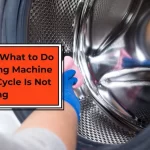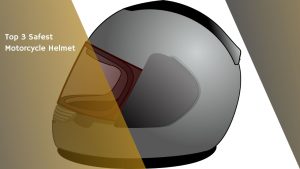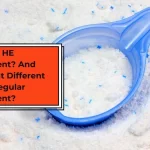What are the components of a water pump? Well, the water pump usually consists of a motor, impeller, casing, and pressure switch to function properly.
Water is crucial to our daily life, and one of the key elements that ensures a stable water supply is a water pump.
However, do you know what components of the water pump work together to flow water from its source to different points of use?
Also Read
In this article, you will explore in depth the crucial components in water pumps and how their respective roles contribute to maintaining an efficient water flow.
So, let’s further dive down into the explanation of components of a water pump to further understand this important device!
Table of Contents
Components of Water Pump

A water pump is a device that plays an important role in the water distribution of an environment that has a complex structure consisting of several major components working in conjunction.
Here is a detailed description of the key components of a water pump:
1. Motor
A motor is a propulsion engine on a water pump that is responsible for generating the mechanical power required to run the entire pump mechanism.
These motors typically use an electric power source to convert it into kinetic energy which is then directed toward other components to flow water at a certain efficiency and pressure.
2. Impeller
The impeller is a component that is shaped like a spiral-shaped propeller and is located in the water pump.
This is the component that plays an important role in transferring kinetic energy from the motor to the water.
By rotating the impeller, this movement produces a force that pushes water into the pump through the inlet.
Furthermore, the impaler pushes the water that has been given this energy out through the pump outlet with a controlled pressure.
3. Casing
The casing is a protective layer around the pump that has a dual function in maintaining the integrity of the pump as well as guiding the flow of water through the process of movement from the inlet to the outlet.
Usually these components are made of strong metal or plastic material and are resistant to the pressure that may be found in everyday operation.
4. Water Inlet and Outlet
The inlet is the entrance channel and the main gateway where water is sucked into the pump.
This suction process then directs the water to the impeller, where the kinetic energy is produced.
After passing through the impeller, the water that has been given the force then flows through the outlet, to the specified distribution point.
The dimensions and design of the inlet and outlet channels greatly influence the flow capacity and pressure generated by the pump.
5. Seal
The seal is located around the motor shaft, which serves the function of preventing water from leaking through the pump at its entry point.
By maintaining the integrity of the internal environment of the pump, these components play a crucial role in protecting the motor from water leakage that can damage the motors.
The materials used for the seals are usually corrosion-resistant and resistant to friction that may occur during operation.
6. Pressure Switch
The pressure switch plays a role in controlling the on and off of the water pump according to the water pressure in the system.
When the pressure of the water reaches a specified limit, the pressure switch will give a signal to activate the pump motor.
Once the air pressure reaches an optimal point, the press switch will turn the pump off to avoid unwanted pressure increases in the systems.
How to Take Care of Your Water Pumps

After knowing the components of the water pump, it is also important to know how to take care of the water pumps so you can achieve an optimum performance of the water pumps.
So, here are some tips from dimulti on how to take care of your water pumps.
1. Check the Water Pressure
Conducting a routine water pressure check in the system is the first step in treating the water pump.
Make sure the water pressure is within the range recommended by the pump manufacturer. If the water pressure is too low, it may indicate a problem in the pump or pipe system, while too high of a pressure can cause excessive voltage on the pump components.
2. Clean and Change the Filter
The filter on the water pump serves to prevent dirt and particles from entering the pump, which can interfere with the flow of water and damage internal components.
Clean the filter regularly to keep the water flow smoothly. If the filter appears to be dirty or blocked, replace it with a new filter in accordance with the manufacturer’s recommendations.
3. Ensure an Enough Air Circulation
A water pump requires sufficient air circulation around it to prevent overheating. Make sure the pump is installed in a place that has good ventilation, especially if installed inside a closed room. Avoid covering or blocking the area around the pump so that the air can circulate more freely.
4. Check The Seal’s Conditions
The seal around the pump shaft is an important part of preventing water from leaking out of the pump.
Always check for its condition regularly. If you notice any signs of leakage or damage, replace the seal immediately.
Regularly checking the seal can prevent water leakage that can damage other components in the pumps.
5. Perform Routine Maintenance
The next step on how to take care of your water pumps is to follow the maintenance guidelines provided by the water pump manufacturer.
Periodic maintenance usually involves measures such as lubricating moving components, cleaning the inside of the pump, and checking the overall pump condition.
Regular maintenance will help maintain an optimal performance and prevent problems that may arise as a result of long-term use.
So there you have it, the components of the water pumps alongside on how to take care of it!
Like many other things that are being distributed and sold in Indonesia, a water pump is one of the things that needs to be certified by the SNI certification.
The SNI certification is a type of product approval that regulates the safety and quality aspects of a product.
The product that is about to be certified by the SNI certification needs to undergo a series of tests to ensure and determine its quality and safety.
While giving the benefits to the customers of Indonesia a peace of mind knowing that the product they bought has already been tested, the SNI certification also comes with a lot of benefits for business owners alike.
The presence of the SNI logo on your product will boost the trust from the Indonesian market, thus improving your integrity and your business’ position.













